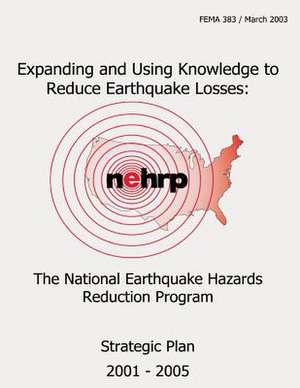Expanding and Using Knowledge to Reduce Earthquake Losses
Autor Federal Emergency Management Agencyen Limba Engleză Paperback
Preț: 121.87 lei
Nou
Puncte Express: 183
Preț estimativ în valută:
23.32€ • 24.40$ • 19.37£
23.32€ • 24.40$ • 19.37£
Carte disponibilă
Livrare economică 12-26 martie
Preluare comenzi: 021 569.72.76
Specificații
ISBN-13: 9781484111413
ISBN-10: 1484111419
Pagini: 78
Dimensiuni: 216 x 279 x 4 mm
Greutate: 0.2 kg
Editura: CREATESPACE
ISBN-10: 1484111419
Pagini: 78
Dimensiuni: 216 x 279 x 4 mm
Greutate: 0.2 kg
Editura: CREATESPACE
